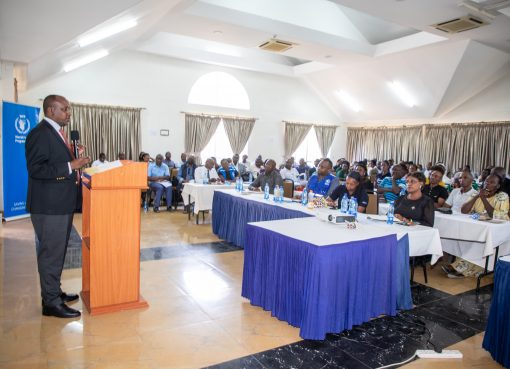The Narok County Monitoring and Evaluation Committee has commended the ongoing construction of a Sh.1.4billion mega tannery and leather factory being built by the government.
Speaking while he led the county implementation committee on a tour of the factory Friday, Narok County Commissioner (CC), George Natembeya said phase one of the project that involved construction and installation of a crucial machine to the tune of Sh.900 million was complete and operational.
“We are pleased by the work we have seen here. Unlike many other government projects that are allocated a lot of money but do not see the light of the day, this project is successful and when complete will add value to the pastoralists’ community,” he said.
The CC was accompanied by the Director of ICT who is also President’s Delivery Unit Director, Khadija Mohammed, South Rift Resident Engineer, Stephen Musindayi, Narok Director of National Environment and Management Authority (NEMA) Patrick Lekenit and other members and County Security committee.
Natembeya said the factory will improve living standards of the local people as they will now be able to sell hides and skins from their livestock in a ready market.
Meanwhile, already a pilot project has commenced in the factory which has been running for two months and has even employed 60 locals as casual labourers.
The factory built by Ewaso Ng’iro South Development Authority (ENSDA) is a major boost for the country as manufacturing is one of the government’s Big 4 Agenda.
Speaking during the visit, ENSDA Chief Manager in charge of Planning, Peter Bwogero said phase two of the project that will cost Sh500 million will entail sensitizing and building the capacity of the residents to make goods out of the finished leather products.
“We want to build a training ground where we can train the locals on how to make goods like shoes, handbags, beddings and furniture among others. This will empower them economically instead of exporting all the leather to outside counties,” said Bwogero.
He also confirmed 75 per cent of the water used in the tannery is recycled making the entity environmental friendly.
“The factory has an effective effluent treatment plant which uses reverse osmosis thus making it environment friendly. The recycled water is used back in the factory. Some of it is purified and taken as fresh water by the factory staff and locals,” said Bwogero.
Construction of the factory began two years ago and is now targeting to get the raw materials from livestock farmers in Narok, Nakuru and Kajiado counties.
He added the factory is now working on 1.5tons of hides and skins per day, processing them to the ‘wet blue’ (not fully processed) and will be doing 13 tons once fully operational
“The tannery is well-equipped and we are now doing trials to ensure that all the equipment is operating well and so far there is good progress,” Bwogero told the committee.
Annually, the factory will be processing 10,000 tons of hides and skins and this will be a game changer in terms of value-addition to livestock by-products which had been overlooked for years.
“We expect to fetch a minimum of Sh.180 million annually from the industry. This will be a big boost to the Kenyan economy,” he said.
The factory will be buying hides and skins at over 10 times the current price, meaning that hides currently being bought at Sh.120 will be selling at between Sh.1500 to Sh.2000, while skins prices will fetch from Sh.200 to Sh.300 depending on the size and quality.
Once complete, the factory will largely be depending on the over 10 abattoirs across the county and will create over 1,000 jobs directly and indirectly.
In the leather industry, the government targets to produce over 20 million pairs of shoes by 2022, while increasing export revenue in the industry to Sh.50 billion in the next five years.
Indeed, this move would be laudable because despite Kenya having the third largest cattle herd in Africa, the country buys 30 million pairs of shoes a year.
To achieve the dream, ENSDA will be partnering with the Leather Development Council, Kenya Investment Authority, Export Processing Zone and Ethiopia, which is a major player in the leather industry across Africa.
“Due to its strategic location to the world famous Maasai Mara, the factory will boost the economy of the region as it will produce leather goods ideal for tourists including leather jacket, shoes, bags and many others,” said Bwogero.
Ewaso Nyiro area is said to be home to the largest number of livestock in the Northern Mara and largest cattle market in the region but lacks proper infrastructure to support the livestock industry.
By Ann Salaton


